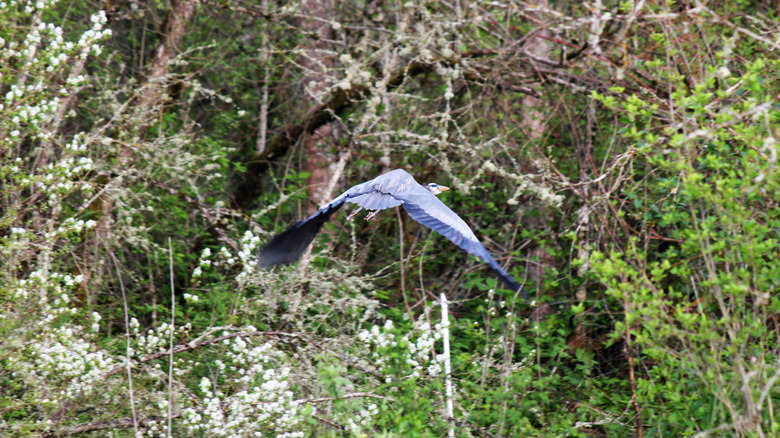
You wake up in Portland, and, as you head out for some of the best coffee in America, you stop by the largest independent bookstore in the world, Powell's City of Books. As you're flipping through field guides, you see something about "secret everglades" in the Columbia Slough, on the east side of town. Sounds pretty wild and weird, and it's only about eight miles away, so you decide to head out for an adventure. So you strap a kayak to your Subaru hatchback (one of the city's most popular cars)
and head to the closest slough launch point.
The Columbia Slough (pronounced "sloo"), a tributary of the Willamette River, runs parallel to the Columbia River for 19 miles. It encompasses miles of waterways within the Columbia River floodplain, punctuated by levees to keep flooding at bay. As a runoff for the city's sewage, it was once "one of the most polluted waterways in the state" and also became a thoughtless dump for manufactured waste. Although a sewage pipeline was completed in 2000 to mitigate dumping waste, the slough remained polluted for years. In 2017, one journalist described it as "less a stream than a marathon-length mud puddle: Its shallow, viscous water moves so slowly the current heaves back and forth with the tides. ... The slough is Portland's bad breath, our petri-dish Everglades."
Recently, however, through the completion of a sewage pipe and efforts from the Columbia Slough Watershed Council and the City of Portland, the slough is looking more like a native swamp and less like an oil spill. Via cleanup and revegetation efforts, nature's revitalizing, and overall bacteria levels are now so low in the Willamette that its nearby beaches have turned Portland into a summertime swimming hole destination.
Read more: Rick Steves Says To Always Do These Things Before Traveling
Explore The Slough By Kayak Or Trails

The Columbia Slough is a flash of nature and wetlands in the pan of Portland's urban center between Fairview Lake and Kelley Point Park. You can paddle the entire stretch, but there are several "portages" involved -- that is, spots where you have to get out and haul your boat over land or pipes. You'll also have to navigate thick algae mats and branches that cover the surface. Spring is the best time to paddle the Columbia Slough, as the water tends to get low and boggy in summer months.
A plethora of wildlife lives here; keep an eye out for Western painted turtles, river otters, and evidence of beavers, who gnaw trees and build dams along the waterways. The slough's a bird-watching paradise, with 175 species of birds, including great blue herons, kingfishers, and bald eagles. Chinook salmon can be found in the Lower Slough, and through the City of Portland's Revegetation Program, over a million native trees and shrubs have been planted along its waterways.
Several rental companies dot the Columbia River, although they do not deliver, so transporting your own watercraft is essential. You can rent kayaks at Alder Creek's Jantzen Beach, which is close to a few slough launch sites, like Smith Lake. Rent at Alder Creek Ridgefield and paddle downriver to access the slough at Kelley Point Park -- just remember you'll have to paddle upriver to return. If you can't get access to a kayak, moderate nature strolls and paved biking paths also criss-cross the slough. The Marine Multi-Use Path is an 11-mile easy out-and-back trail away from crowds, and Delta Park West is a favorite five-mile trail. Whitaker Ponds is a short, scenic loop near a kayak launch, and Springwater Corridor is a popular, paved biking trail.
Ready to discover more hidden gems and expert travel tips? Subscribe to our free newsletter for access to the world's best-kept travel secrets.
Read the original article on Islands.











